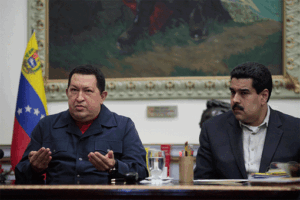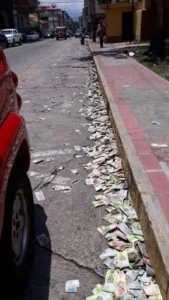Lesson 13: Venezuela’s Crisis and the Collapse of Its Currency
Venezuela’s hyperinflationary crisis, which began in earnest around 2013, was the result of a complex combination of factors, many of which were rooted in the country’s reliance on oil exports and the mismanagement of its economy. Venezuela’s vast oil reserves had once made it one of the wealthiest nations in Latin America, but the government’s dependence on oil revenue left it vulnerable to fluctuations in global oil prices. As oil prices began to fall sharply in the mid-2010s, Venezuela’s economy was hit hard, leading to severe budget deficits. Instead of diversifying its economy, the government, under President Hugo Chávez and later Nicolás Maduro, continued to rely on oil exports to fund social programs and government spending.

The Venezuelan government’s response to its economic troubles was to print more money. As oil revenues declined, the government resorted to increasing the money supply to cover its budget deficits, leading to runaway inflation. By 2018, inflation in Venezuela reached an astronomical rate of over 1 million percent. Prices for basic goods soared, and the value of the bolívar, the country’s currency, collapsed. The central bank’s decision to print vast amounts of money without any tangible backing led to a currency crisis that devastated the economy and rendered the bolívar practically worthless.

Venezuela’s overreliance on oil exports was a critical factor in its economic downfall. For decades, oil revenues accounted for the majority of the country’s income, leading to a lack of diversification in the economy. As oil prices fell, the government was unable to replace that revenue with other sources of income. Economic mismanagement, including the nationalization of key industries and widespread corruption, exacerbated the situation. The government’s decision to subsidize consumer goods and provide generous social welfare programs, while popular in the short term, ultimately became unsustainable in the face of declining oil revenues.
Political instability also played a significant role in Venezuela’s crisis. The country’s political landscape became increasingly polarized, with the opposition accusing the government of authoritarianism and economic mismanagement. Protests and civil unrest became common, and the Maduro administration’s attempts to quell dissent through violence and repression only deepened the country’s woes. The breakdown of social order, coupled with the collapse of the economy, led to mass emigration as millions of Venezuelans sought refuge in neighboring countries, further destabilizing the region.
In an effort to address Venezuela’s economic problems, the Maduro government turned to a well-worn but ultimately destructive tool: printing more money. The central bank, under government direction, began flooding the economy with currency in an attempt to finance social programs and public spending. However, this only exacerbated the inflationary spiral. As more money entered circulation, the value of the bolívar continued to plummet. Prices for basic goods soared, and the economy became increasingly dollarized as citizens turned to US dollars to protect their savings and engage in everyday transactions.
The government’s refusal to change its economic policies and its insistence on printing money without regard for economic fundamentals led to the eventual collapse of the bolívar. In 2018, the government introduced a new currency, the bolívar soberano, in an attempt to address the hyperinflation crisis, but the damage had already been done. The collapse of Venezuela’s currency was a stark reminder of the dangers of relying on inflationary measures to solve deep-seated economic problems.
The consequences of Venezuela’s hyperinflation crisis were catastrophic for society. The most immediate effect was the destruction of savings, as the bolívar’s collapse rendered people’s savings worthless. Prices for basic necessities, including food, medicine, and fuel, skyrocketed, making it impossible for many Venezuelans to afford even the most basic items. In an effort to escape the hyperinflationary nightmare, millions of Venezuelans fled the country in search of better opportunities, leading to one of the largest migration crises in Latin America’s history.
Social institutions also broke down as a result of the economic crisis. Hospitals were unable to function due to the lack of medical supplies, and schools closed due to the inability to maintain facilities. The country’s healthcare system, once regarded as one of the best in Latin America, deteriorated rapidly. The failure of the government to address the underlying economic issues and its refusal to accept international aid or negotiate with opposition groups made it difficult to resolve the crisis. As inflation continued to rage, Venezuela’s social fabric unraveled, and the country’s future remained uncertain.
The collapse of the national currency in Venezuela marked the final stage of a long process of economic decay. As hyperinflation took hold, the country’s financial system broke down, with banks unable to provide basic services such as cash withdrawals or currency exchanges. The bolívar became useless as a store of value, and many Venezuelans turned to the US dollar or cryptocurrencies as alternatives. The government’s refusal to adopt any meaningful reforms or restructure its economy led to the collapse of social institutions, as citizens lost faith in the country’s political system.
In the aftermath of the crisis, Venezuela faced significant challenges in rebuilding its economy. The collapse of the currency and the breakdown of social institutions left a deep scar on Venezuelan society.
